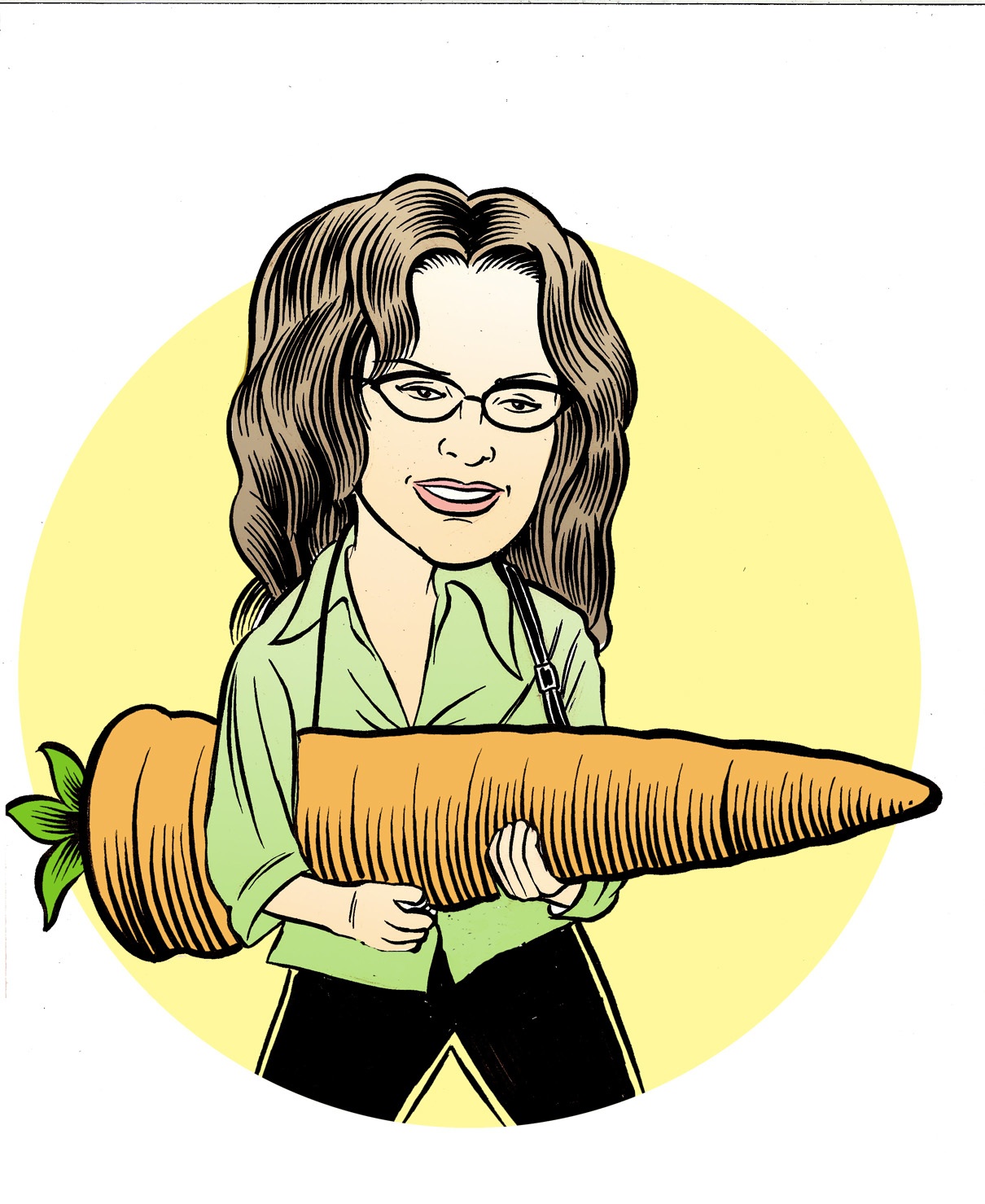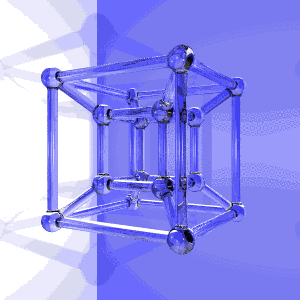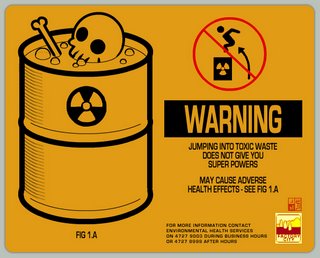 BY ELIZABETH FIEND The vernal equinox, AKA spring time, occurs when the earth is tilted so that the sun is directly over the equator at high noon. In this momentary balance of light and dark, we are halfway between summer and winter. Mid-points have been celebrated through out the ages and around the world. In ancient Babylon, the New Year occurred at the spring equinox. The ancients of America oriented their giant earthwork mounds to equinox sunrise points. Celtic Pagans lit fires at dawn to cure ills, renew life and protect crops. Today, we party in Cancun.
BY ELIZABETH FIEND The vernal equinox, AKA spring time, occurs when the earth is tilted so that the sun is directly over the equator at high noon. In this momentary balance of light and dark, we are halfway between summer and winter. Mid-points have been celebrated through out the ages and around the world. In ancient Babylon, the New Year occurred at the spring equinox. The ancients of America oriented their giant earthwork mounds to equinox sunrise points. Celtic Pagans lit fires at dawn to cure ills, renew life and protect crops. Today, we party in Cancun.
Or we clean.
This season of renewal brings with it the tradition of spring cleaning, making now as good a time as any to switch to all things natural. I’m talking about cleaning products — for your home and your body. All types of non-toxic cleaners for your home are now available in conventional supermarkets: glass, drain, dishwasher, dish soap, laundry, shower, even toilet bowl cleaners. Most are competitively priced or cost just a tad bit more than chemical-based cleaners. Theses natural cleaners are conveniently located right next to the toxic ones, or maybe on a shelf not quite at eye level.
to switch to all things natural. I’m talking about cleaning products — for your home and your body. All types of non-toxic cleaners for your home are now available in conventional supermarkets: glass, drain, dishwasher, dish soap, laundry, shower, even toilet bowl cleaners. Most are competitively priced or cost just a tad bit more than chemical-based cleaners. Theses natural cleaners are conveniently located right next to the toxic ones, or maybe on a shelf not quite at eye level.
Instead of the toxic, nonrenewable or harmful-to-the-environment ingredients like petroleum, butyl cellosolve, chlorine bleach, and the cancer-causing fragrance ingredient phthalates, the new non-toxic cleaners are made from ingredients like corn, grain alcohol, palm kernel, and citrus and coconut oils. And they really work. Hypo-allergenic, with no perfumes or dyes, they smell nice too. To my nose, they smell way, way better.
Why make the switch?
VOCs — Volatile organic compounds — are gases emitted from some liquid or solid chemicals. VOCs are emitted from the very same chemicals that are included in many cleaning products, disinfectants and air fresheners. They’re in your dry cleaning too. Not to mention their presence in other common household products like paint, varnish, craft and hobby materials. They’re also found in scads of personal care products like cosmetics, body soaps and shampoos, and baby products. [Today I’m just talkin? cleaning. But be forewarned: In the future I’ll do an in-depth report about all types of personal care products and cosmetics. It’s bad news. Very, very, bad.]
Open the windows! (Seriously.)
The EPA estimates that VOCs are present in the air indoors, that is, in your home, in concentrations up to 10 times higher than outdoors. These toxic gases have short- and long-term negative health effects including headaches, irritation to eyes, nose and throat, nausea and most alarmingly, damage to your central nervous system, liver and kidneys.
Do I have to go on? OK: fatigue, dizziness, allergic skin reaction, difficulty breathing, declines in cholinesterase levels (an enzyme found in the heart, brain, and blood and at nerve endings, which hydrolyzes acetylcholine to acetic acid and choline — so there). Several of the toxic VOCs found in cleaning products are definitely known to cause cancer in animals and are suspected to be carcinogenic in humans too.
As far back as last century, a study published in New Scientist found that in households in which a lot of air fresheners were used, pregnant women experienced 25 percent more headaches and their newborn babies had a 30 percent higher rate of ear infections than in homes that didn’t use air fresheners. This was a big study too, involving 1,400 women.
 It’s tricky to know which products to buy because the laws work against us. No safety standards are set for non-commercial levels of VOCs, and federal law doesn?t require the listing of all chemicals in non-food products. Laundry soaps such as Tide and Cheer may have as many as 300 ingredients, but only a few are actually listed on the label.
It’s tricky to know which products to buy because the laws work against us. No safety standards are set for non-commercial levels of VOCs, and federal law doesn?t require the listing of all chemicals in non-food products. Laundry soaps such as Tide and Cheer may have as many as 300 ingredients, but only a few are actually listed on the label.
“Green” company Seventh Generation’s bathroom cleaner contains only five ingredients: hydrogen peroxide (the active stain removal agent), biodegradable surfactants (for soil removal), citrus oil (for grease removal), food-grade, non-toxic oxygen stabilizers (to help the hydrogen peroxide last longer), and water. It removes soap scum. Do you really need another 295 other secret, non-listed ingredients? I think not.
When shopping, you have to be seriously careful about the new trend of greenwashing by manufacturers and admen. They use words like non-toxic, eco-safe, natural, environmentally friendly and organic. Unfortunately when used to describe (or sell) non-food items these phrases, have absolutely no regulation as to their meaning. So, assume they mean absolutely nothing. ?Fragrance-free? however does generally mean, fragrance free. I’d say, go for it.
Throw away the notion that if your mom used it it’s gotta be good (sorry Mom) and begin instead with the concept that if you can’t pronounce it, don’t use it. A best bet would be to use a cleaning product with the Green Seal (it’s actually blue with a green check-mark). Green Seal is a great non-profit out of Washington, DC that investigates products and services and certifies them for environmental safety and sustainability. And remember, this is your house, not a hospital — so maybe use less of that cleaning product and clean a little less often (sorry again Mom).
And while we’re at it, why increase the chemical overload on your body by applying toxic chemicals to it? Switch to natural personal care products, too.
Toothpaste: it’s a cleaning product you actually put straight into your mouth. So why use one made with added colorants, thickeners, preservatives and harsh cleaning chemicals? And sweeteners — do you really need to brush your teeth with a product that contains artificial sugar?
Traditional toothpastes have creepy, mysterious ingredients like sodium hexametaphosphate, which is defined as ?sodium phosphate glass.? I don’t know what the hell that is or what it does, and I don’t even want to know, since I can buy a perfectly good product without it.
On the shelf next to the toothpastes made with saccharin, preservatives, artificial flavors and colorings, you’ll find toothpaste made from all-natural flavors with out additives. They taste better too. Tom’s of Main is the brand I use, and it comes in about a bazillion options and flavors.
Oh my lack of god, I just looked at the toxicity report for Revlon Aquamarine Shampoo. The bottle boasts extra body, fresh scent and 21 ingredients. It doesn?t tell you that of those 21 ingredients, 13 raise health concerns; six have violations, restrictions, and warnings attached to them; and one proprietary ingredient has an identity unknown. Nine ingredients have not been assessed by the cosmetics industry at all and 13 have data gaps. All this info thanks to an exhaustive study conducted by the watchdog non-profit, Environmental Working Group. And this is a shampoo that’s ranked as being of moderate concern. I’ll spare you news about the products of high concern and just advise: skip ?em all and go natural.
boasts extra body, fresh scent and 21 ingredients. It doesn?t tell you that of those 21 ingredients, 13 raise health concerns; six have violations, restrictions, and warnings attached to them; and one proprietary ingredient has an identity unknown. Nine ingredients have not been assessed by the cosmetics industry at all and 13 have data gaps. All this info thanks to an exhaustive study conducted by the watchdog non-profit, Environmental Working Group. And this is a shampoo that’s ranked as being of moderate concern. I’ll spare you news about the products of high concern and just advise: skip ?em all and go natural.
Unfortunately, non-toxic personal cleaners like shampoo and body soap have not made the leap into many conventional supermarkets and drug stores. Indeed, you might have to (gasp!) pay a visit to a health food store. Whole Foods, generally a pricey chain, actually has some excellent, inexpensive shampoos and soaps. They’re nonperishable so you can stock up on ’em, and always have some on hand. And peruse my previous article about antibacterial soaps.
Go zen.
While you’re doing all this cleaning, cut down on material possessions. It’s called junk for a reason, people — give away the stuff you no longer use or need and don’t buy new stuff. You’ll have less to clean.
You can save money and make your own green cleaning products. “They” say these really work. What? You figure I probably make all my own cleaning products. Hell yeah I would, but I don’t actually do any cleaning. Mr. Fiend takes care of all that. (Ok, I’m a spoiled bitch. I cook, he cleans.)
Share with us your own special green cleaning tips or try some of these out and report back here how they work.
Sources:
Environmental Protection Agency
Green Certification:
Products:
ABOUT THIS COLUMN: At no time in recorded history have we possessed so much knowledge about health and nutrition, nor have we ever had such vast and effective machinery for disseminating that knowledge — and yet, for all intents and purposes, we live in hi-tech Dark Age with the vast majority of the global population essentially ignorant or confused about the basic facts of their own biology. How did this happen? Well, that’s a whole six-part mini-series in and of itself, but the short answer is that the bottom line of many a multi-national corporation is dependent on that ignorance, and vast sums of money are expended to maintain it. The global warming argument is a classic example. When scientific fact did not favor Big Oil, they hired their own scientists to to conduct and publish studies that contradicted the peer-reviewed facts about the environmental impact of carbon-based emissions. As a result, whenever the latest global warming news is relayed to the public, it always comes with the caveat that “some dispute these findings.” There was time when newspapers saw it as their duty to truth squad these debates, but that’s long since become a luxury most papers can no longer afford — better to hire another gossip columnist and give the people what they want. To fill this crucial gap, Phawker began publishing Elizabeth Fiend’s JUNK SCIENCE column. Every week, Miss Fiend connects the dots to reveal a constellation of scientific facts that have been hiding in plain sight — scattered across the vast, cold reaches of the Internet. With a background in punk rock and underground comics, and longstanding employment as a de facto research librarian, Miss Fiend doesn’t pretend to be a scientist or an expert. She does, however, know how scientific facts become diluted by corporate-sponsored non-facts, and every week she separates the smoke from the mirrors. Why? Because she loves you.
